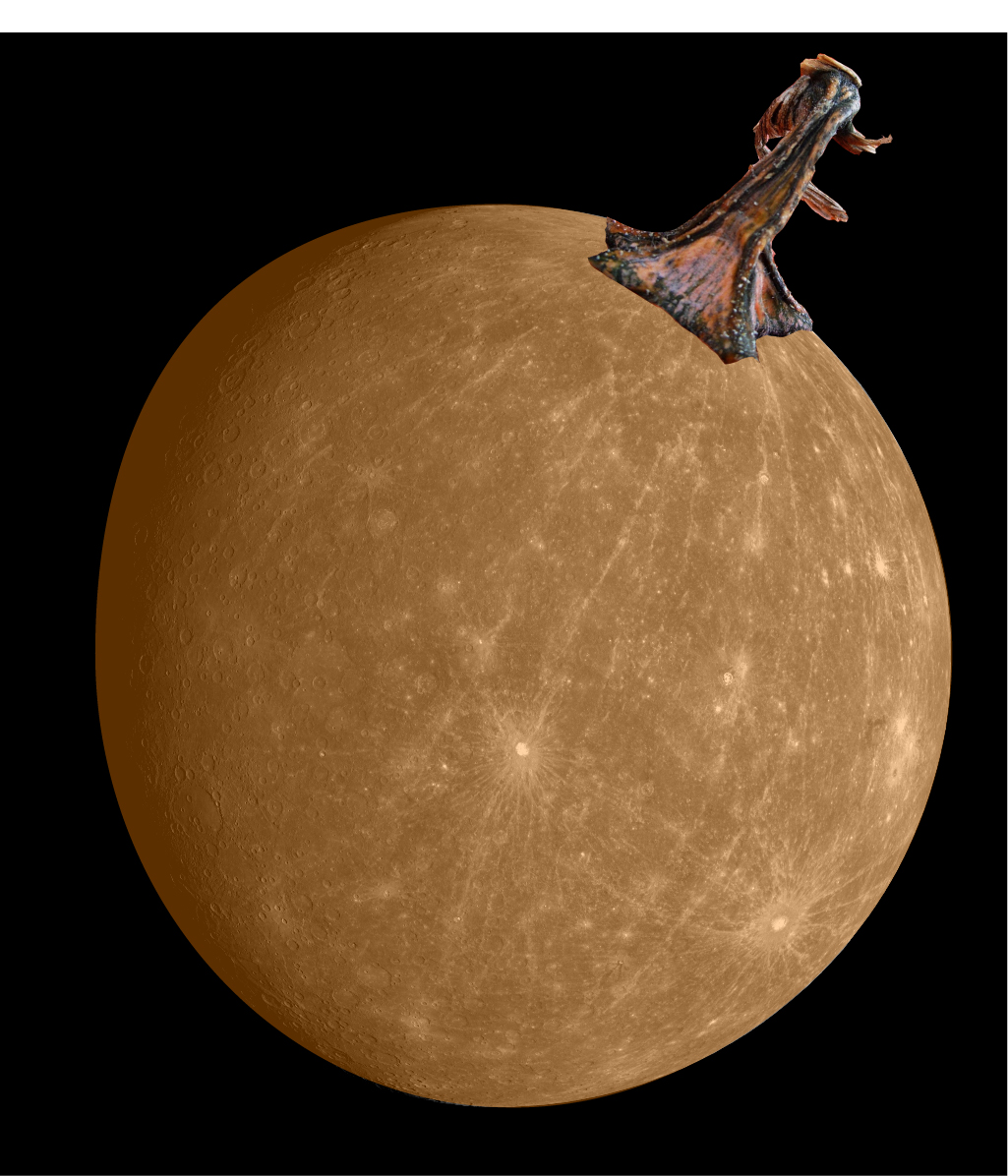The Key Stuff:
Woo hoo! New images of Mercury!
The way I’d introduce this and interpret it in the planetarium is just to ask questions about it, and collect visitor hypotheses. That’s all the scientists have right now: questions. They also have some hypotheses about bits of it, but they haven’t had time to think of ideas for everything, and even less to test or analyze those ideas.
What’s up with those longitudinal lines?
Why are those rayed craters so bright?
Some of those craters are on the lines, why?
Is that Mercury’s North pole at the top?
What causes lines like that on other planets?
Here’s some background to help you with your analysis.
Rays:
As we know from the Moon, rays often emanate from craters – especially new craters. When the meteor impacts, it sprays up a bunch of regolith (surface rock/dirt) that falls down in a rayed pattern. Go stomp in a puddle. Watch what happens – that’s what I’m talking about.
Bright Craters:
Brighter craters are almost always newer. The rock is newly broken, showing “shiny” un-weathered, un-covered, un-eroded faces to the sunlight which bounces back at us.
North and South:
According to the MESSENGER press release, that is the North Pole of Mercury up there at the top with a crater on it.
Longitudinal Lines:
The MESSENGER team has floated the idea that these are rays from that Northern crater. They know more than me, but that seems to me like a long way for ejecta (the kicked up regolith) to go. A really long way. How hard would that impact have had to be? Would Mercury’s gravity be enough to pull that ejecta back?
Want More?
Emily [2] promises to have a post up soon.
Phil’s already chatting about it [3].
My Source [4].
P.S. Phil’s wrong [3]. It’s not a watermelon. It’s a pumpkin, and I have incontrovertable proof:

